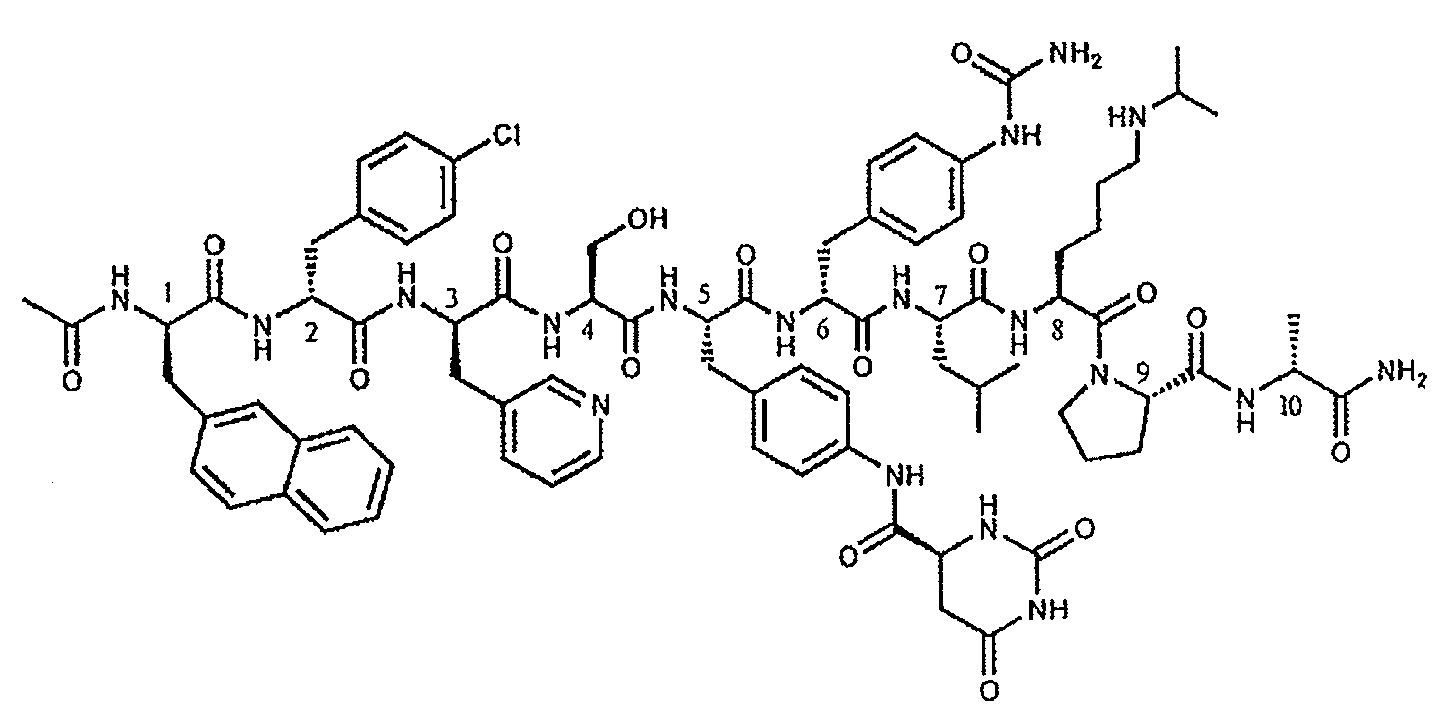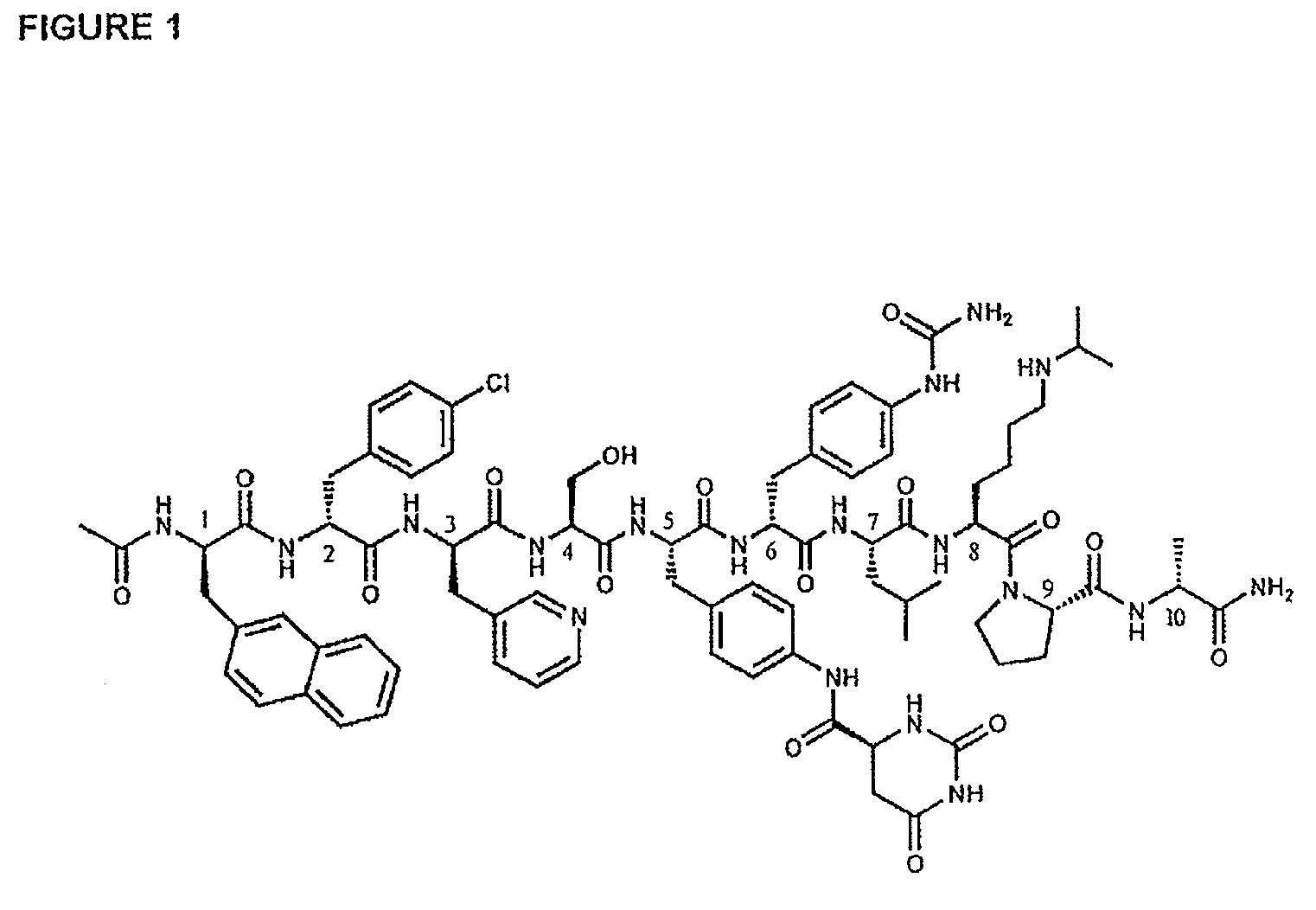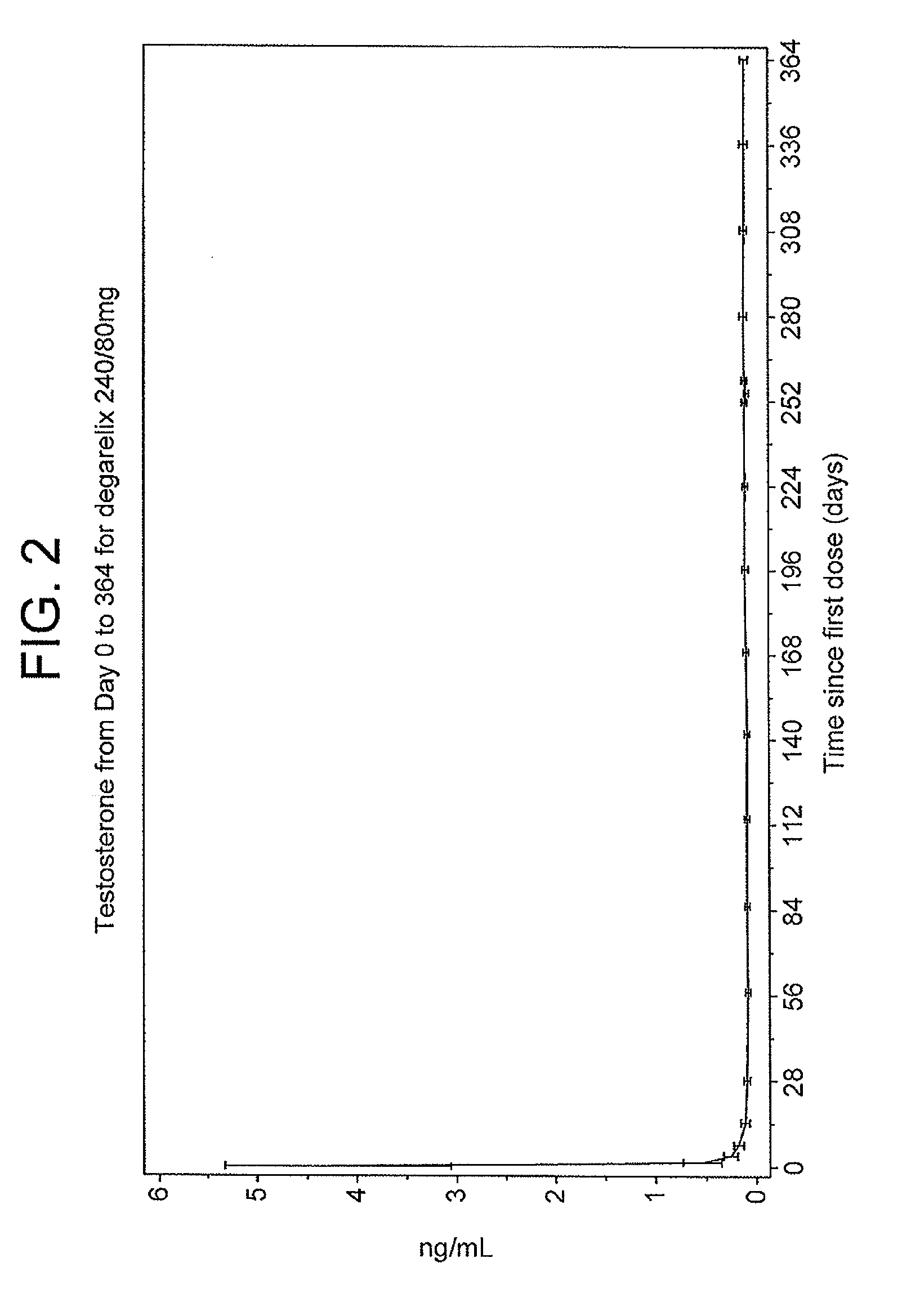METHOD OF TREATING PROSTATE CANCER WITH GnRH ANTAGONIST
a prostate cancer and gnrh technology, applied in the direction of pharmaceutical delivery mechanism, drug composition, peptide/protein ingredients, etc., can solve the problems of further worsening the condition, use of antiandrogens, serious hepatic and gastrointestinal side effects, etc., to reduce risk and suppress the effect of safe and rapid testosterone levels
- Summary
- Abstract
- Description
- Claims
- Application Information
AI Technical Summary
Benefits of technology
Problems solved by technology
Method used
Image
Examples
examples
Clinical Study of Degarelix for the Treatment of Prostate Cancer
[0107]In this example, an open-label, multi-center, randomized, parallel-group study was conducted to investigate the efficacy and safety of degarelix one month dosing regimens. Patients in two degarelix treatment groups received a degarelix starting dose of 240 mg at a concentration of 40 mg / mL followed by either of two different once-a-month dosing regimens, 160 mg (40 mg / mL) and 80 mg (20 mg / mL). These degarelix dosing regimens were compared to LUPRON DEPOT™ at 7.5 mg in patients with prostate cancer requiring androgen ablation therapy.
[0108]The study also investigated whether degarelix is safe and effective with respect to achieving and maintaining testosterone suppression to castrate levels, evaluated as the proportion of patients with testosterone suppression ≦0.5 ng / mL during 12 months of treatment, and compared serum levels of testosterone and prostate-specific antigen (PSA) using a degarelix dosing regimen vers...
PUM
| Property | Measurement | Unit |
|---|---|---|
| blood pressure | aaaaa | aaaaa |
| density lipoprotein cholesterol | aaaaa | aaaaa |
| density lipoprotein cholesterol | aaaaa | aaaaa |
Abstract
Description
Claims
Application Information
 Login to View More
Login to View More - R&D
- Intellectual Property
- Life Sciences
- Materials
- Tech Scout
- Unparalleled Data Quality
- Higher Quality Content
- 60% Fewer Hallucinations
Browse by: Latest US Patents, China's latest patents, Technical Efficacy Thesaurus, Application Domain, Technology Topic, Popular Technical Reports.
© 2025 PatSnap. All rights reserved.Legal|Privacy policy|Modern Slavery Act Transparency Statement|Sitemap|About US| Contact US: help@patsnap.com



